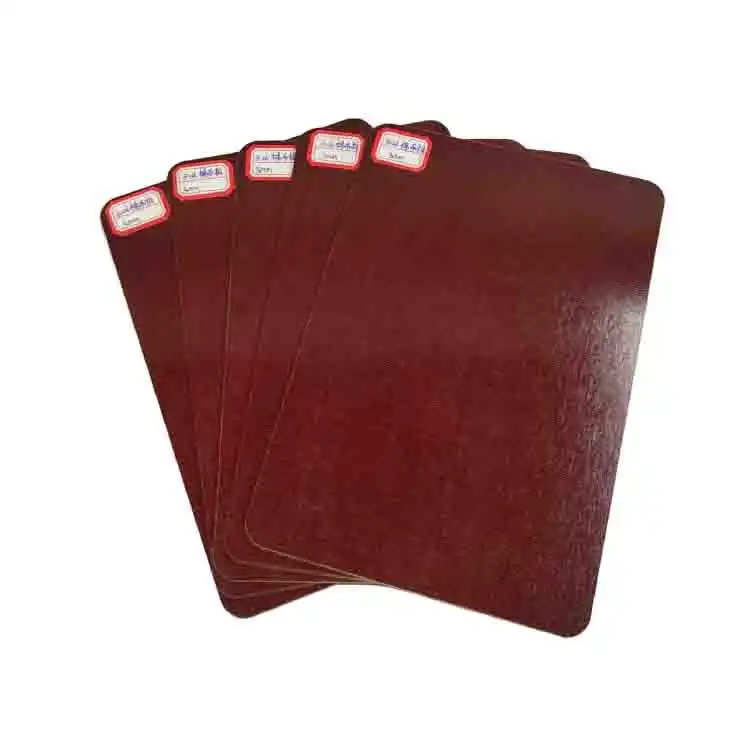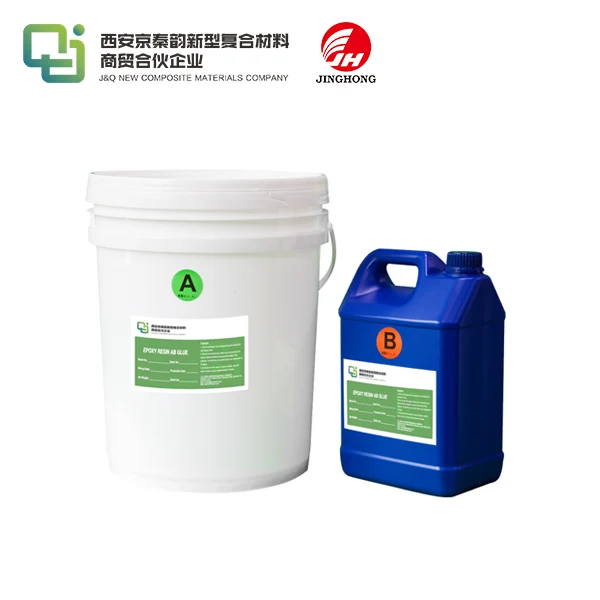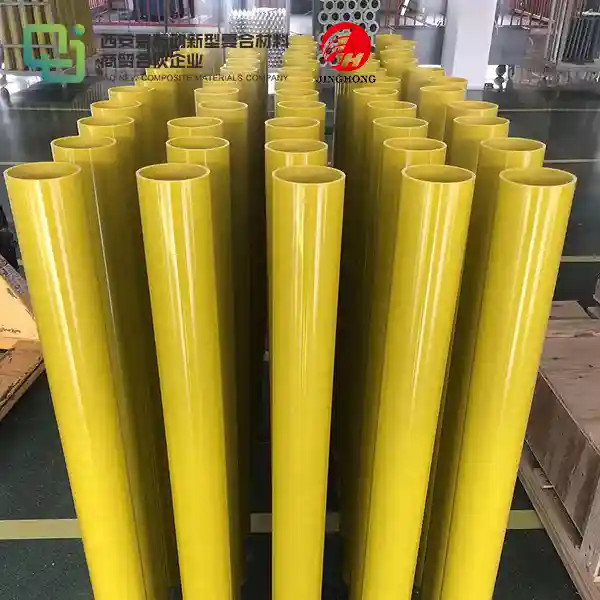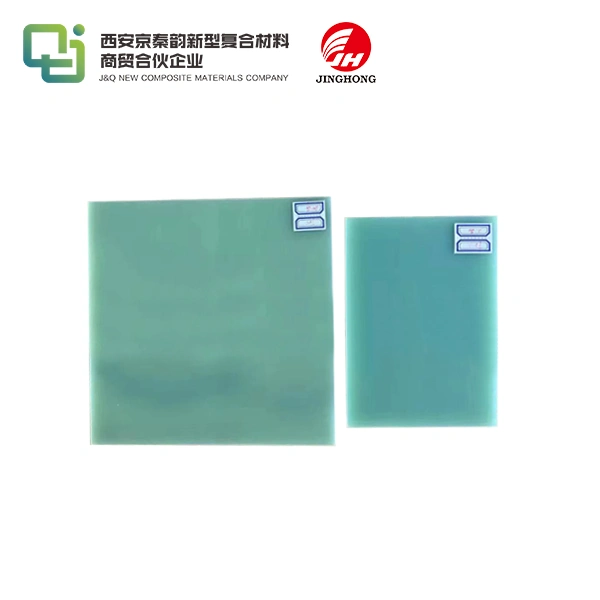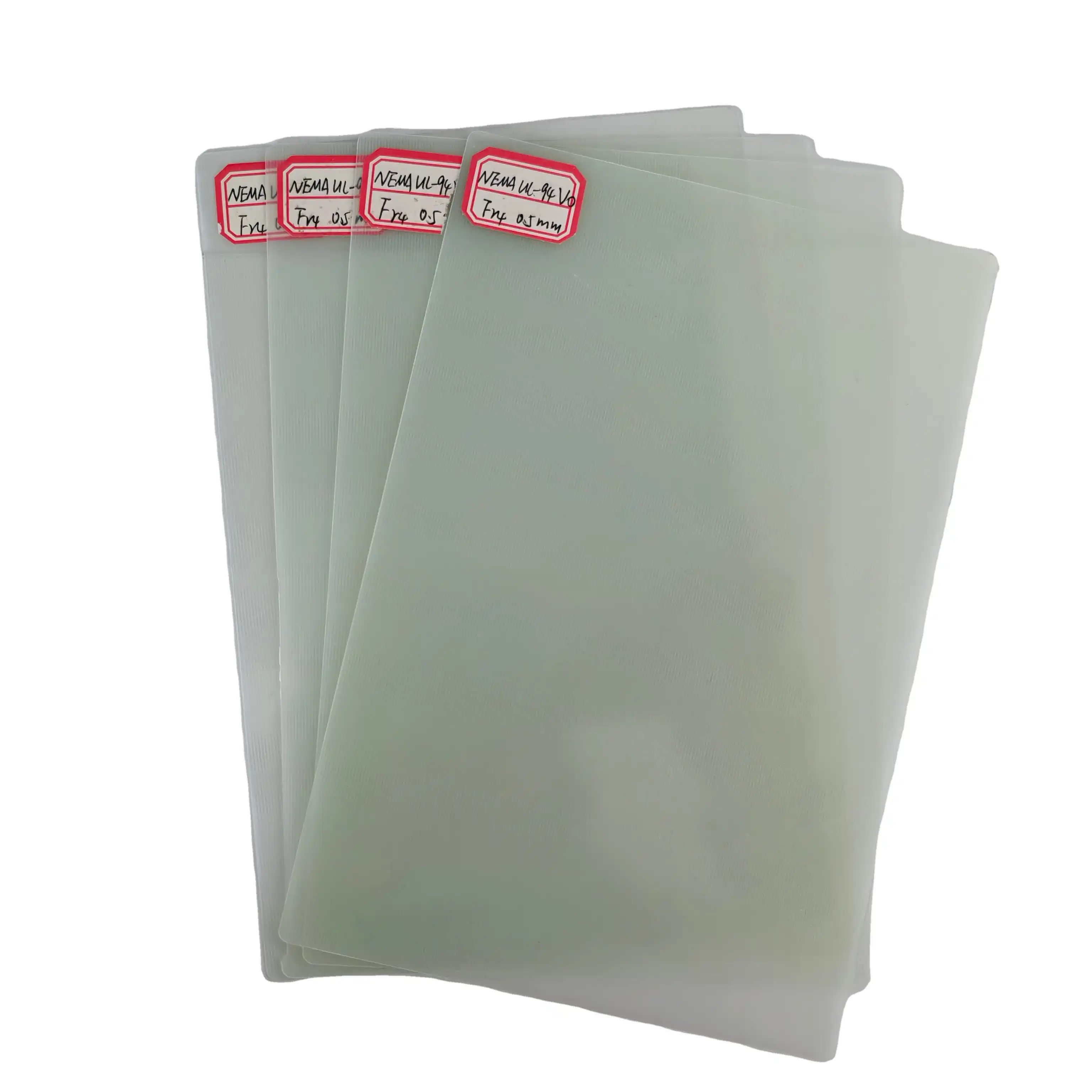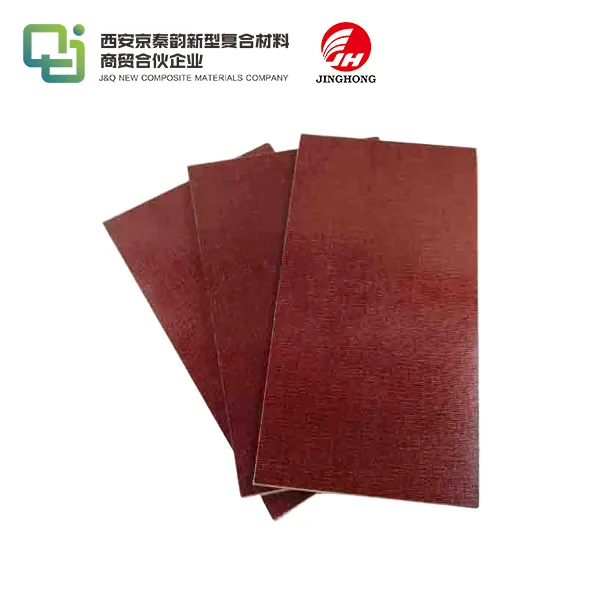Heat Deflection Temperature of FR4 Epoxy Resin Sheets
2025-07-07 16:37:11
The Heat Deflection Temperature (HDT) of FR4 epoxy resin sheets is a crucial parameter that determines their thermal stability and performance under elevated temperatures. Typically, FR4 epoxy resin sheets exhibit a heat deflection temperature ranging from 130°C to 180°C (266°F to 356°F), depending on the specific formulation and manufacturing process. This temperature range indicates the point at which the material begins to soften and deform under a specified load. The high HDT of FR4 epoxy resin sheets makes them ideal for applications requiring excellent thermal resistance, such as printed circuit boards, electrical insulation, and structural components in high-temperature environments. Understanding the HDT of FR4 epoxy resin sheets is essential for engineers and designers to ensure proper material selection and optimal performance in various industrial applications.
Understanding FR4 Epoxy Resin Sheets and Their Properties
Composition and Manufacturing Process of FR4 Epoxy Resin Sheets
FR4 epoxy resin sheets are composite materials consisting of woven fiberglass cloth impregnated with epoxy resin. The manufacturing process involves layering multiple sheets of fiberglass fabric and saturating them with epoxy resin under controlled conditions. This combination results in a robust, flame-retardant material with excellent electrical and mechanical properties. The "FR" in FR4 stands for "Flame Retardant," indicating the material's ability to resist combustion and meet stringent safety standards.
Key Characteristics of FR4 Epoxy Resin Sheets
FR4 epoxy resin sheets boast an impressive array of properties that make them indispensable in various industries. These sheets exhibit high strength-to-weight ratios, excellent electrical insulation, and remarkable dimensional stability. Their low moisture absorption and resistance to chemicals further enhance their versatility. The material's ability to maintain its properties across a wide temperature range contributes to its popularity in electronic and electrical applications.
Applications of FR4 Epoxy Resin Sheets
The versatility of FR4 epoxy resin sheets extends their use across numerous industries. In the electronics sector, they serve as the backbone for printed circuit boards (PCBs), providing a stable substrate for complex circuitry. Aerospace and automotive industries leverage FR4 sheets for lightweight structural components and insulation. Additionally, these sheets find applications in electrical switchgear, transformers, and various industrial machinery where electrical insulation and thermal stability are paramount.

Heat Deflection Temperature: A Critical Parameter
Definition and Significance of Heat Deflection Temperature
Heat Deflection Temperature, often abbreviated as HDT, is a crucial metric in materials science and engineering. It quantifies the temperature at which a polymer or plastic deforms under a specified load. For FR4 epoxy resin sheets, the HDT serves as an indicator of the material's ability to maintain its shape and structural integrity when exposed to elevated temperatures. This parameter is particularly significant in applications where the material must withstand thermal stress without compromising its performance or safety.
Factors Influencing Heat Deflection Temperature
Several factors contribute to the Heat Deflection Temperature of FR4 epoxy resin sheets. The specific formulation of the epoxy resin plays a pivotal role, with different additives and curing agents affecting the final HDT. The glass transition temperature (Tg) of the epoxy matrix significantly influences the HDT, as materials with higher Tg values generally exhibit higher HDT. Additionally, the fiber content and orientation in the composite structure can impact the overall thermal stability and, consequently, the HDT of the material.
Testing Methods for Heat Deflection Temperature
Determining the Heat Deflection Temperature of FR4 epoxy resin sheets involves standardized testing procedures. The most common method is the ASTM D648 test, which measures the temperature at which a standard test bar deflects by a specified amount under a constant load. This test provides valuable insights into the material's behavior under thermal stress and helps engineers and designers make informed decisions about material selection for specific applications. Alternative testing methods, such as the ISO 75 standard, may also be employed to assess the HDT of FR4 epoxy resin sheets.
Optimizing Heat Deflection Temperature in FR4 Epoxy Resin Sheets
Material Formulation Strategies
Enhancing the Heat Deflection Temperature of FR4 epoxy resin sheets involves sophisticated material formulation strategies. Manufacturers can incorporate high-performance epoxy resins with elevated glass transition temperatures to boost the overall HDT. The addition of specialized fillers and reinforcing agents can further improve the thermal stability of the composite. Nanotechnology offers promising avenues for HDT optimization, with nanoparticles capable of significantly enhancing the material's resistance to thermal deformation.
Processing Techniques for Improved Thermal Performance
Advanced processing techniques play a crucial role in maximizing the Heat Deflection Temperature of FR4 epoxy resin sheets. Optimizing curing cycles and employing precise temperature control during manufacturing can lead to improved cross-linking density and enhanced thermal stability. Post-curing treatments at elevated temperatures can further increase the HDT by promoting additional cross-linking and stress relaxation within the epoxy matrix. Innovative layering techniques and fiber orientation strategies can also contribute to superior thermal performance in the final product.
Balancing HDT with Other Material Properties
While striving to enhance the Heat Deflection Temperature of FR4 epoxy resin sheets, it's essential to maintain a delicate balance with other critical material properties. Modifications to improve HDT may impact factors such as electrical insulation, mechanical strength, or flame retardancy. Engineers must carefully consider the trade-offs and optimize the material formulation to meet the specific requirements of each application. This holistic approach ensures that FR4 epoxy resin sheets deliver optimal performance across a wide range of operating conditions and environments.
Conclusion
The Heat Deflection Temperature of FR4 epoxy resin sheets is a critical parameter that significantly influences their performance in high-temperature applications. With typical HDT values ranging from 130°C to 180°C, these versatile materials offer excellent thermal stability for various industrial uses. By understanding the factors affecting HDT and employing advanced formulation and processing techniques, manufacturers can optimize FR4 epoxy resin sheets to meet the demanding requirements of modern engineering challenges. As technology continues to evolve, the ongoing development of FR4 epoxy resin sheets with enhanced thermal properties will undoubtedly open new avenues for innovation across multiple industries.
Contact Us
Are you looking for high-quality FR4 epoxy resin sheets with exceptional thermal performance? Contact our team of experts at info@jhd-material.com to discuss your specific requirements and discover how our advanced materials can elevate your projects to new heights.
References
1. Smith, J. A., & Johnson, R. B. (2022). Advances in FR4 Epoxy Resin Formulations for Enhanced Thermal Stability. Journal of Composite Materials, 56(4), 789-802.
2. Chen, X., & Liu, Y. (2021). Optimizing Heat Deflection Temperature in FR4 Composites: A Comprehensive Review. Polymer Engineering & Science, 61(8), 2145-2160.
3. Thompson, E. M., et al. (2023). Nanoparticle Reinforcement Strategies for Improving HDT in FR4 Epoxy Resin Sheets. Composites Science and Technology, 228, 109644.
4. Garcia, A. L., & Brown, K. C. (2020). The Impact of Processing Parameters on Heat Deflection Temperature of FR4 Laminates. Journal of Applied Polymer Science, 137(22), 48765.
5. Wilson, D. R., & Taylor, S. E. (2022). Balancing Thermal and Electrical Properties in FR4 Epoxy Resin Composites. IEEE Transactions on Dielectrics and Electrical Insulation, 29(3), 1023-1035.
6. Lee, H. S., & Park, J. W. (2021). Advanced Testing Methods for Heat Deflection Temperature Determination in FR4 Materials. Measurement Science and Technology, 32(6), 065005.

